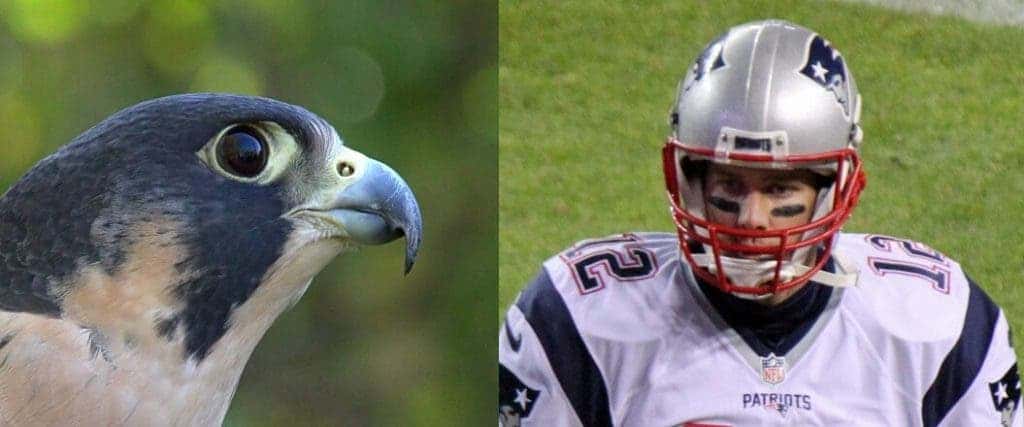There are over 40 species of falcon in the world, and many of them exhibit a distinctive dark plumage below the eye. Termed the malar areas (or malar stripe), this plumage is almost always black, almost as if it were black make-up — now, researchers have a better idea why.

Life for falcons often happens at high speeds. The peregrine falcon, the fastest of the bunch, can reach whopping speeds of up to 390 km/h (242 mph). At that kind of speed, every detail matters, and a keen vision is crucial. According to a new study, these dark areas directly beneath the falcons’ eyes work to reduce sunlight glare and offer an extra edge for the hunters’ sight during high-speed chases.
“The peregrine falcon represents the ideal species to explore this long-standing hypothesis, because it has one of the most widespread distributions of all bird species, being present on every continent except Antarctica — it is therefore exposed to some of the brightest and some of the dullest areas around the globe,” said Associate Professor Arjun Amar from the UCT FitzPatrick Institute, who supervised the research.
This hypothesis has been proposed before, but this is the first study to link solar radiation levels to the ‘eyeliner’ plumage. In order to reach this conclusion, researchers gathered photos of peregrine falcons around the world posted by bird watchers, noting the size of the malar stripe for each bird. They then correlated the size and shape of these stripes with aspects of the local climate (such as rainfall and the strength of sunlight).
In places where the sunlight was stronger, the malar stripes tended to be larger and darker.
“We found that the size and prominence of the malar stripe were positively associated with average annual solar radiation, but not with other environmental variables, such as temperature and rainfall,” the researchers write. “Our results provide the first published evidence for the hypothesis that this plumage feature functions to reduce the amount of solar glare reflected into the falcon’s eyes, thereby improving the ability to pinpoint and target agile prey in bright conditions.”
This won’t come as a surprise to most biologists as this hypothesis was already accepted by many. However, until this study, actual evidence for it was scarce.
“The solar glare hypothesis has become ingrained in popular literature, but has never been tested empirically before,” said Michelle Vrettos, an MSc student from UCT who carried out the research. Vrettos added: “Our results suggest that the function of the malar stripe in peregrines is best explained by this solar glare hypothesis.”
Even so, this is still just a correlation and not a causation. In other words, a coincidence can’t be fully ruled out. Still, this type of indirect evidence is important for finding connections that can help us understand why some creatures evolved to be the way we see them today. Thankfully, as cameras have become more and more accessible and the internet has allowed people to share their photos with ease, researchers have access to an unprecedented trove of images. Amar concludes:
“We are grateful to all the photographers around the world that have deposited their photos onto websites. Without their efforts this research would not have been possible.”
Journal Reference: Michelle Vrettos, Chevonne Reynolds, Arjun Amar. Malar stripe size and prominence in peregrine falcons vary positively with solar radiation: support for the solar glare hypothesis. Biology Letters, 2021; 17 (6): 20210116 DOI: 10.1098/rsbl.2021.0116


